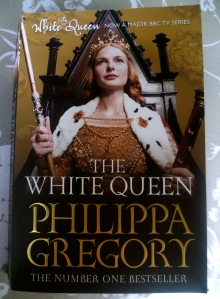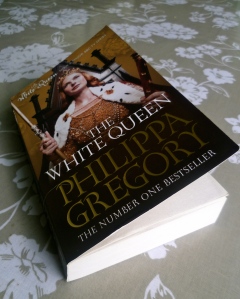Published: 2013 (paperback), Arrow Books, 509 pages
Historical fiction
Setting the scene
Edward IV’s two young princes are in line for his throne. Yet, following the King’s sudden death in 1483, it is his brother, Richard, who is crowned King.
Did Richard III conspire to usurp the throne from his nephews the princes? What happened to the princes who, lodged in the Tower of London, were then never to be seen again?
*
Richard III’s illegitimate daughter, Katherine Plantagenet, is disturbed by rumours of her father’s involvement in the disappearance of the princes. Eighty years later, their fate also haunts Lady Katherine Grey who feels compelled to investigate the mystery for her own reasons.
Through perilous investigations, can either of these young women come close to revealing the truth behind the mystery of the ‘Princes in the Tower’?
Review
Living decades apart, the lives of Katherine ‘Kate’ Plantagenet and Katherine Grey share several tragic similarities. Both young women experience the danger that comes with being royal and both are driven by an instinctual yearning to uncover the truth behind the mystery of the princes.
Kate Plantagenet’s experiences are recounted in third-person beginning in 1483 with news of King Edward IV’s death. She finds herself swept up in political turmoil when her father – the late king’s brother and Lord Protector to his sons and heirs – is controversially proclaimed king, after which no one sees the princes again.
Speculation mounts around whether King Richard, considered by many a usurper, had his nephews ‘done away with’ in order to secure his throne. Kate is naturally drawn to support her father whom she loves dearly, though gradually even she finds doubts creeping into her thoughts.
Whilst the mystery has a more immediate bearing on Kate, decades later, Katherine Grey is equally compelled by it. Initially examining the mystery because of an affinity she feels for Kate after seeing her portrait, she later has a child and finds her motherly instinct absorbs her further into it.
Katherine Grey’s tale, narrated in first-person, begins in 1553 when her sister, Jane, is declared Queen. Jane, a devoted Protestant, is a reluctant Queen who rules for only nine days before support for the Catholic Mary Tudor challenges her rule. Jane is overthrown, imprisoned and later executed for treason. So, before Katherine is yet thirteen, she has tragic experience of the complexity of having royal blood, and unfortunately for Katherine this is only the beginning. Whilst naïve and impulsive, she is a character we sympathise with throughout her turmoil.
Both young women are rendered pawns in a game of ambition and alliances. They and their kin suffer tragedy at the hands of those who oppose them and the threat posed by their dangerous inheritance: their royal blood.
However, the novel seems as much an examination of the heroine’s love lives as it is the mystery of the princes. Given their royal blood and import in making alliances, both Katherines find themselves prohibited from having that which they truly desire- the man they love, rather than a man who would be an advantageous match. This is hardly surprising for the time, though Kate is particularly harshly used to make a good alliance and Katherine is cruelly denied marriage, despite their – somewhat dangerously – clear feelings for the men they love.
The tales of Kate and Katherine could easily have been split into two separate books. The interweaving of their stories seems to be reliant on a ‘supernatural’ element which is a little tenuous (Katherine feels drawn to a portrait of Kate, experiences dreams of her and strange moments of terror when wearing Kate’s old pendant). The stories of Kate and Katherine are also interesting enough as they are, they do not need an added supernatural element.
Overall
Would I recommend this book? Yes, to anyone with an interest in this era.
★★★☆☆
The novel is very well-written, presenting the intricacies of court life with historical authenticity and induced me to shed a tear at one heart-breaking moment. It will excite the curiosity of anyone interested in this era as Katherine Plantagenet, a figure we know so little about, is rarely presented as vividly as Weir brings her to life.
*






